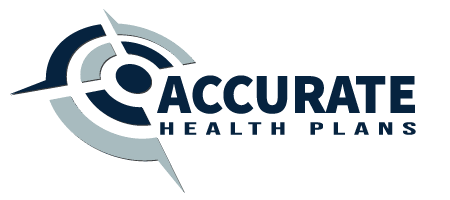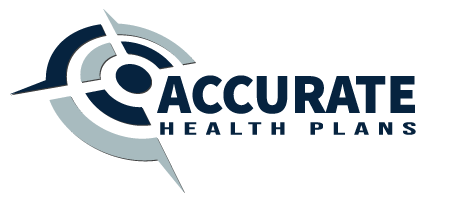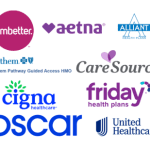Frequently Asked Health Insurance Questions
Medicare Part A coverage is responsible for hospital-related expenses. In most cases, Medicare Part A doesn’t require a monthly premium. You paid for this during your working years by paying a minimum of 10 years of Social Security taxes through payroll.
Consequently, most people earn Medicare Part A.
In the event someone didn’t earn Medicare Part A, it can be purchased. For those who need to purchase Medicare Part A they will spend up to $423 per month in 2020.
Below are some examples of Medicare Part A covered services:
- Inpatient hospital care
- Skilled nursing facility care
- Blood
- Hospice care
- Home health services
Medicare Part B coverage is responsible for medical-related expenses. When you are first eligible for Medicare, you have a 7-month initial enrollment period (IEP).
Your IEP begins 3 months before the month you turn 65, you birth month, and ends 3 months after.
Below are some common examples of Medicare Part B covered services:
- Doctor’s visits
- Ambulance services
- Ambulatory surgical centers
- Blood
- Bone density tests
- Breast cancer screening
- Cardiac rehabilitation
- Cardiovascular disease
- Cervical screenings
- Diabetes screening
- Chronic care management
- Colo-rectal cancer screenings
- CPAP
Part B also has a monthly premium which is, in most cases, deducted from your Social Security check each month. Part B premiums can be as low as $144 or as high as $428.60.
The range in price is directly correlated to your income. Those individuals who qualify for Medicaid may not have to pay the Part B premium.
If for some reason you don’t elect Part B on time, you will be subject to a late enrollment penalty of 10% for every full 12 months they delay enrollment.
The Medicare Part B enrollment penalty can be waived in instances where the proposed insured has credible coverage, for example, you have existing coverage through an employer.
Lastly, Medicare Part B has an annual deductible of $198 (2020 data). This deductible must be met before Medicare will begin paying. At the point of meeting the deductible, you will be on the hook for 20% of the Medicare-approved amount.
A quick look at your Medicare coverage choices
There are 2 main options for how you get your Medicare coverage.
Option 1 – Original Medicare + Medicare Supplement (Medigap)
- This includes Part A and Part B.
- Part A – Hospital Insurance
- Part B – Medical Insurance
- You can Add: Part D – Medicare Prescription Drug Coverage
- You can also Add: Medigap – Medicare Supplement Insurance.
- (Medigap policies help pay your out-of-pocket costs in original Medicare.)
- Affordable monthly premiums
- No Network
- Covers most Medicare related expenses with little out of pocket expense
Option 2 – Medicare Advantage (Part C)
- These plans are like HMOs or PPOs, and typically include Part A, B and D
- Part A – Hospital Insurance
- Part B – Medical Insurance
- Part D – Medicare Prescription Drug Coverage
- (Most plans cover prescription drugs. If yours doesn’t you may be able to join a separate Part D plan.)
- Advantage plans generally have little to no monthly premium
- PPO or HMO Networks
- Copays for most services
- Preset maximum out-of-pocket for in or out of network
- There are additional benefits for those with Medicare & Medicaid
Medicare Part C is commonly known as Medicare Advantage (MA plans)
Medicare Advantage is also offered in the common forms of an HMO or PPO plan from private insurance companies approved by Medicare. This means that those who choose a Medicare Advantage plan are subject to using the doctors listed in the associated HMO (requires referral) or PPO (referrals NOT required) networks.
These are the plans that everyone sells during the annual enrollment period from October 15th through December 7th and some during the open enrollment period from January 1st to March 31st of each year.
Top Medicare Advantage Companies You Might Recognize
- Aetna
- Coventry
- United Health Care
- Humana
- Cigna
- Cigna HealthSpring
- Anthem
The confusing part about Medicare Advantage is that client’s often think if they have a Medicare Advantage plan, that they no longer have Medicare.
That is false!
Parts A and B are required to enroll in Medicare Advantage.
The difference is that once you are enrolled in Medicare Advantage, the private insurance company becomes the primary payor instead of the Medicare program and assumes the liability of paying the Part A and Part B covered services. This was a way for Medicare to cut spending and transfer the patient liability to the private insurance companies. This transfer of liability is why you see some plans offering additional benefits such as dental, vision, hearing and wellness. It’s the private insurance company’s best interest to keep their policyholders healthy in order to maintain acceptable loss ratios.
People choose Medicare Advantage for a few reasons:
- Covers Part A and Part B deductibles
- Carries little to no premiums (as of 2020)
- Offers additional services such as hearing aids, wellness discounts, and limited dental work.
- Some plans include prescription drug coverage, reducing the out-of-pocket monthly premium costs.
Using Part C is one way you can limit your risk of the 20% liability of original Medicare.
Medicare Advantage Plans
Medicare Advantage Plans are a type of Medicare health plan offered by a private company that contracts with Medicare to provide all your Part A and Part B benefits. Most Medicare Advantage Plans also offer prescription drug coverage. If you’re enrolled in a Medicare Advantage Plan, most Medicare services are covered through the plan. Your Medicare services aren’t paid for by Original Medicare. Below are the most common types of Medicare Advantage Plans.
- Health Maintenance Organization (HMO) Plans
- Preferred Provider Organization (PPO) Plans
- Private Fee-for-Service (PFFS) Plans
- Special Needs Plans (SNPs)
Other less common types of Medicare Advantage Plans that may be available include HMO Point of Service (HMO-POS) Plans and a Medicare Medical Savings Account (MSA) Plan.
Here are 6 tips in helping you choose the correct Medicare drug coverage:
If you’re wondering how to choose a Medicare drug plan that works for you, the best way is to start by looking at your priorities. See if any of these apply to you:
I take specific drugs.
Look at drug plans that include your prescription drugs on their formulary (a list of prescription drugs covered by a drug plan). Then, compare costs.
I want extra protection from high prescription drug costs.
Look at drug plans offering coverage in the coverage gap, and then check with those plans to make sure they cover your drugs in the gap.
I want my drug expenses to be balanced throughout the year.
Look at drug plans with no or a low deductible, or with additional coverage in the coverage gap.
I take a lot of generic prescriptions.
Look at Medicare drug plans with “tiers” that charge you nothing or low co-payments for generic prescriptions.
I don’t have many drug costs now, but I want coverage for peace of mind and to avoid future penalties.
Look at Medicare drug plans with a low monthly premium for drug coverage. If you need prescription drugs in the future, all plans still must cover most drugs used by people with Medicare.
I like the extra benefits and lower costs available by getting my health care and prescription drug coverage from one plan, and I’m willing to pick a drug plan with restrictions on what doctors, hospitals, and other health care providers I can use.
Look for a Medicare Advantage Plan (Part C) with prescription drug coverage.
Feel Free to Call Accurate Health Plans for a Free, No Obligation Review of Your Part D Coverage @ 1 (800) 235-0876
What does Medicare Part D drug plans cover?
Each plan that offers prescription drug coverage through Medicare Part D must give at least a standard level of coverage set by Medicare. Plans can vary the list of prescription drugs they cover (called a formulary) and how they place drugs into different “tiers” on their formularies.
List of covered prescription drugs (formulary)
Most Medicare drug plans (Medicare Prescription Drug Plans and Medicare Advantage Plans with prescription drug coverage) have their own list of what drugs are covered, called a formulary. Plans include both brand-name prescription drugs and generic drug coverage. The formulary includes at least 2 drugs in the most commonly prescribed categories and classes. This helps make sure that people with different medical conditions can get the prescription drugs they need. All Medicare drug plans generally must cover at least 2 drugs per drug category, but plans can choose which drugs covered by Part D they will offer.
The formulary might not include your specific drug. However, in most cases, a similar drug should be available. If you or your prescriber (your doctor or other health care provider who’s legally allowed to write prescriptions) believes none of the drugs on your plan’s formulary will work for your condition, you can ask for an exception.
A Medicare drug plan can make some changes to its drug list during the year if it follows guidelines set by Medicare. Your plan may change its drug list during the year because drug therapies change, new drugs are released, or new medical information becomes available.
Plans offering Medicare prescription drug coverage under Part D may immediately remove drugs from their formularies after the Food and Drug Administration (FDA) considers them unsafe or if their manufacturer removes them from the market. Plans meeting certain requirements also can immediately remove brand name drugs from their formularies and replace them with new generic drugs, or they can change the cost or coverage rules for brand name drugs when adding new generic drugs. If you’re currently taking any of these drugs, you’ll get information about the specific changes made afterwards.
For other changes involving a drug you’re currently taking that will affect you during the year, your plan must do one of these:
Give you written notice at least 30 days before the date the change becomes effective.
At the time you request a refill, provide written notice of the change and at least a month’s supply under the same plan rules as before the change.
Note
For 2019 and beyond, drug plans offering Medicare prescription drug coverage (Part D) that meet certain requirements also can immediately remove brand name drugs from their formularies and replace them with new generic drugs, or they can change the cost or coverage rules for brand name drugs when adding new generic drugs. If you’re taking these drugs, you’ll get information about the specific changes made to generic drug coverage afterwards.
You may need to change the drug you use or pay more for it. You can also ask for an exception. Generally, using drugs on your plan’s formulary will save you money. If you use a drug that isn’t on your plan’s drug list, you’ll have to pay full price instead of a copayment or coinsurance, unless you qualify for a formulary exception. All Medicare drug plans have negotiated to get lower prices for the drugs on their drug lists, so using those drugs will generally save you money. Also, using generic drugs instead of brand-name drugs may save you money.
Generic drugs
The Food and Drug Administration (FDA) says generic drugs are copies of brand-name drugs and are the same as those brand-name drugs in:
dosage form
safety
strength
route of administration
quality
performance characteristics
intended use
Generic drugs use the same active ingredients as brand-name prescription drugs. Generic drug makers must prove to the FDA that their product works the same way as the brand-name prescription drug. In some cases, there may not be a generic drug the same as the brand-name drug you take, but there may be another generic drug that will work as well for you. Talk to your doctor or another prescriber about your generic drug coverage.
Tiers
To lower costs, many plans offering prescription drug coverage place drugs into different “tiers” on their formularies. Each plan can divide its tiers in different ways. Each tier costs a different amount. Generally, a drug in a lower tier will cost you less than a drug in a higher tier.
Here’s an example of a Medicare drug plan’s tiers (your plan’s tiers may be different):
Tier 1—lowest copayment : most generic prescription drugs
Tier 2—medium copayment: preferred, brand-name prescription drugs
Tier 3—higher copayment: non-preferred, brand-name prescription drugs
Specialty tier—highest copayment: very high cost prescription drugs
In some cases, if your drug is in a higher (more expensive) tier and your prescriber thinks you need that drug instead of a similar drug on a lower tier, you can file an exception and ask your plan for a lower copayment.
Remember, this is only an example—your drug plan’s tiers may be different.
You’ll make these payments throughout the year in a Medicare drug plan:
- Premium
- Yearly deductible
- Copayments or coinsurance
- Costs in the coverage gap
- Costs if you get Extra Help
- Costs if you pay a late enrollment penalty
Your actual drug plan costs will vary depending on:
- The drugs you use
- The plan you choose
- Whether you go to a pharmacy in your plan’s network
- Whether the drugs you use are on your plan’s formulary
- Whether you get Extra Help paying your Medicare Part D costs
- Look for specific Medicare drug plan costs, and then call the plans you’re interested in to get more details.
Note
If your drug costs are higher than what you paid last year, talk to your doctor. There may be lower cost drugs you can use instead. This could save you in out-of-pocket costs throughout the year. If you want more information on drug prices, you can look at dashboards that highlight which manufacturers have been increasing their prices and also show other year-to-year drug price information. These are general or total prices and increases may not match changes in what you’ll pay.
If you have limited income and resources, your state may help you pay for Part A and/or Part B. You may also qualify for Extra Help to pay for your Medicare prescription drug coverage.
Special enrollment periods if you get Extra Help
Join, switch, or drop your Medicare Advantage Plan or Medicare prescription drug coverage.
When?
One time during each of these periods:
- January–March
- April–June
- July–September
If you make a change, it will take effect on the first day of the following month. You’ll have to wait for the next period to make another change. You can’t use this Special Enrollment Period from October–December. However, all people with Medicare can make changes to their coverage from October 15–December 7, and the changes will take effect on January 1.
I qualify for Extra Help paying for Medicare prescription drug coverage.
What can I do?
Join, switch, or drop Medicare prescription drug coverage.
When?
One time during each of these periods:
- January–March
- April–June
- July–September
If you make a change, it will take effect on the first day of the following month. You’ll have to wait for the next period to make another change. You can’t use this Special Enrollment Period from October–December. However, all people with Medicare can make changes to their coverage from October 15–December 7, and the changes will take effect on January 1.
I’m enrolled in a State Pharmaceutical Assistance Program (SPAP) or lose SPAP eligibility.
What can I do?
Join either a Medicare Prescription Drug Plan or a Medicare Advantage Plan with prescription drug coverage.
When?
Once during the calendar year.
Most Medicare Prescription Drug Plans charge a monthly fee that varies by plan. You pay this in addition to the Medicare Part B premium. If you join a Medicare Advantage Plan (Part C) or Medicare Cost Plan that includes Medicare prescription drug coverage, the plan’s monthly premium may include an amount for drug coverage.
Note:
The same insurance company may offer Medigap policies and Medicare Prescription Drug Plans.
If you join a Medigap policy and a Medicare drug plan offered by the same company, you may need to make 2 separate premium payments for your coverage. Contact your insurance company for more details.
Get your premium automatically deducted
Contact your drug plan (not Social Security) if you want your premium deducted from your monthly Social Security payment. Your first deduction will usually take 3 months to start, and 3 months of premiums will likely be deducted at once.
After that, only one premium will be deducted each month. You may also see a delay in premiums being withheld if you switch plans. If you want to stop premium deductions and get billed directly, contact your drug plan.
How much does Part D cost?
Most people only pay their Part D premium. If you don’t sign up for Part D when you’re first eligible, you may have to pay a Part D late enrollment penalty.
If your modified adjusted gross income is above a certain amount, you may pay a Part D income-related monthly adjustment amount (Part D IRMAA). Medicare uses the modified adjusted gross income reported on your IRS tax return from 2 years ago (the most recent tax return information provided to Social Security by the IRS). You’ll pay the Part D IRMAA amount in addition to your monthly plan premium, and this extra amount is paid directly to Medicare, not to your plan. The chart below lists the extra amount costs by income.
Social Security will contact you if you have to pay Part D IRMAA, based on your income. The amount you pay can change each year. If you have to pay a higher amount for your Part D premium and you disagree (for example, if your income goes down), use this form to contact Social Security [PDF, 125 KB]. If you have questions about your Medicare prescription drug coverage, contact your plan.
Note
The extra amount you have to pay isn’t part of your plan premium. You don’t pay the extra amount to your plan. Most people have the extra amount taken from their Social Security check. If the amount isn’t taken from your check, you’ll get a bill from Medicare or the Railroad Retirement Board. You must pay this amount to keep your Part D coverage. You’ll also have to pay this extra amount if you’re in a Medicare Advantage Plan that includes drug coverage.
If Social Security notifies you about paying a higher amount for your Part D coverage, you’re required by law to pay the Part D-Income Related Monthly Adjustment Amount (Part D IRMAA). If you don’t pay the Part D IRMAA, you’ll lose your Part D coverage.
Employer/Union coverage and Part D IRMAA
Note
You pay your Part D IRMAA directly to Medicare, not to your plan or employer.
You’re required to pay the Part D IRMAA, even if your employer or a third party (like a teacher’s union or a retirement system) pays for your Part D plan premiums. If you don’t pay the Part D IRMAA and get disenrolled, you may also lose your retirement coverage and you may not be able to get it back.
Things to remember
Pay your Part D IRMAA bill to Medicare as soon as you get it. Find out how to pay your bill. Keep your address current with Social Security, even if you don’t get a Social Security check.
Part D premiums by income
The chart below shows your estimated prescription drug plan monthly premium based on your income as reported on your IRS tax return. If your income is above a certain limit, you’ll pay an income-related monthly adjustment amount in addition to your plan premium.
2020
If your Filing Status and Yearly income in 2018
| File Individual Tax Return | File Joint Tax Return | File Married & Separate Tax Return | You pay each month in 2020 |
|---|---|---|---|
| $87,000 or less | $174,000 or less | $87,000 or less | Your plan premium |
| Above $87,000 up to $109,000 | Above $174,000 up to $218,000 | Not Applicable | $12.20 + your plan premium |
| Above $109,000 up to $136,000 | Above $218,000 up to $272,000 | Not Applicable | $31.50 + your plan premium |
| Above $136,000 up to $163,000 | Above $272,000 up to $326,000 | Not Applicable | $50.70 + your plan premium |
| Above $163,000 and less than $500,000 | Above $326,000 and less than $750,000 | Above $87,000 and less than $413,000 | $70.00 + your plan premium |
| $500,000 or Above | $750,000 and Above | $413,000 and Above | $76.40 + your plan premium |
What is a Medicare Prescription drug plan?
Medicare Prescription Drug Plans (sometimes called “PDPs”) add prescription drug coverage to Original Medicare, some Medicare Private Fee-for-Service (PFFS) Plans, some Medicare Cost Plans, and Medicare Medical Savings Account (MSA) Plans.
How do I get prescription coverage with Medicare?
Give us a call at (1-800-235-0876)
- We will your current coverage
- Let us know what medications you take,
- The dosage and times per day
- We will look to see which plan is best for you for the upcoming year.
Medicare Part D is what covers prescription drugs and carries a monthly premium. If a Medicare beneficiary doesn’t enroll in Part D on time, a penalty will be added to their premium moving forward. Penalties are waived in instances that your client has existing credible coverage.
Part D plans follow the annual election period (AEP) schedule and can be changed every year between October 15th and December 7th.
It’s very important to review these plans annually because the tiers and copay’s can change.



